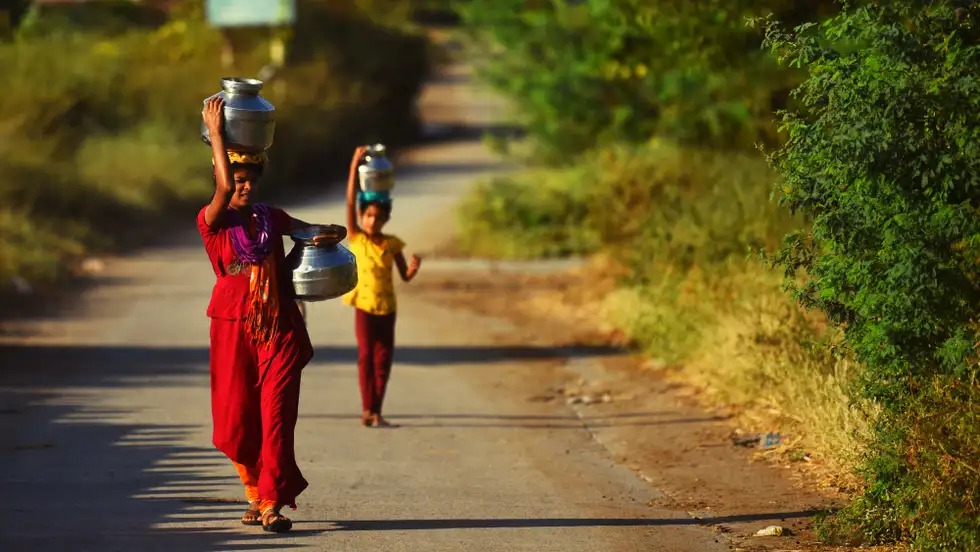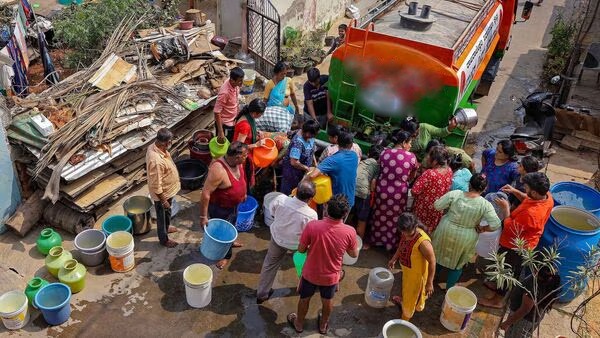No time to lose, there is no life without water
 (1).jpg)
March 09, 2024
By Rahul NandanUntil very recently we all in Bengaluru used to feel that it was just a matter of time that water crisis would knock on our doors. In the blink of our eyes, water scarcity not only knocked on our doors but is well inside our homes now. A reality which we kept ignoring and only spoke about all these years.
Bengaluru had been staring at an acute water scarcity for sometime now but nonetheless it failed to act upon it as a collective entity — both people and the government.
The fallouts of Bengaluru becoming India’s IT capital and one of fastest developing cities are alarming. The city’s population of 1.3 crore (13.6 million) today from just around 8 lakh in 1950 is unbelievably phenomenal, immensely straining its infrastructure. According to a study by the Centre for Ecological Sciences of the Indian Institute of Science, Bengaluru has lost 78% of its green cover and 79% of water spread area (water bodies) with an astounding 925% jump in paved surfaces (building, roads etc.) in the past 40 years. Almost 90%-95% of the city’s numerous lakes are sewage fed and encroached upon.
.jpg)
The unchecked, unplanned urbanization over the years has left the city high and dry, staring either at Cauvery or expensive water tankers. The city receives about 1,450 million litres per day (MLD) of Cauvery water and around 700 MLD from borewells but faces a shortfall of 1,680 million litres per day. Of the 14,700 borewells in Bengaluru, 6,997 have already dried up. Further, the Cauvery water level has significantly dropped owing to acute shortage of rain coupled with constantly changing climatic conditions.
The residents of those 110 villages that were added to the city corporation limits over 15 years ago are the worst affected with Cauvery water still to reach them. The Cauvery V stage project that could see the light of the day this year is expected to bring the much-needed relief to the region, but how much is something that must be seen.

But it is not only Bengaluru that is facing unprecedented water shortage, just that it has been in news for sometime now. Every big metropolis of India is facing more or less similar situation, including the wettest cities of Chennai and Mumbai. In 2019, Chennai was all over for running out of water, becoming one of the first major cities of the world to dry up along with Cape Town, South Africa. Mumbai has faced perennial water shortages for several years now despite receiving heavy rains. Delhi, Hyderabad, Kolkata, and Pune have all been facing similar situations. Even smaller cities like Jaipur, Bhopal and Ahmedabad are staring at water scarcity. Studies predict that around 160 million people in India will be living in water-stressed cities by 2030.
What is that you as a citizen must do?
Every single person of the 140-crore population of India is a stakeholder in its promising future and must act right away to correct its course towards becoming a water sustainable country. What all you must do from now on today:
- Stop using groundwater for washing cars, gardening
- Save, store & reuse RO reject water
- Install water aerators in taps for 50% savings
- Check leakages, seepages in house
- Minimize unnecessary cleaning, like wet mopping of floor once a week
- Run washing machine & dishwasher only when fully loaded
- Use bucket instead of shower to bath
- Reuse unsoiled clothes and wash vegetables in stored water
- Explore rain water harvesting
What is that the government must do?

The governments have always been in reactive mode to the turn of events that has led the major cities of India to this point of severe water crisis. For many years, they have turned a blind eye to the situation and the factors responsible for it and many a times have been hand-in-glove with the culprits. The governments must awake from slumber and come up with a foolproof strategy to tackle water crisis in the long term and become water sustainable before it is too late. They are duty-bound to ensure supply of adequate clean drinking water to its citizens. The clear-cut action plan must:
- Regulate booming real estate and construction with strict norms & approvals
- Check unplanned urbanization and unnecessary projects
- Rejuvenate lakes and rivers
- Revive canal networks in the cities
- Rain water harvesting policy
- Large-scale treatment of waste water and its appropriate reuse
- Effective industrial and agriculture water use policy
- Massive increase in green cover of cities by planting & nurturing millions of saplings
- Strict norms to regulate tree felling
- Strict environmental impact assessment of every infrastructure projects
- Minimize water supply leakages, wastage
We cannot afford to sleep anymore on our future and must act in cohesion to prevent the nation from the impending water catastrophe. The collective will of 140 crore Indians can definitely make this possible. Let us all take the right step in the direction from this minute because there is no time to lose as there is no life without water!
We would love to hear from you. Send us your thoughts and views to: info@antardhwani-theinnervoice.org You can also reach out to us on